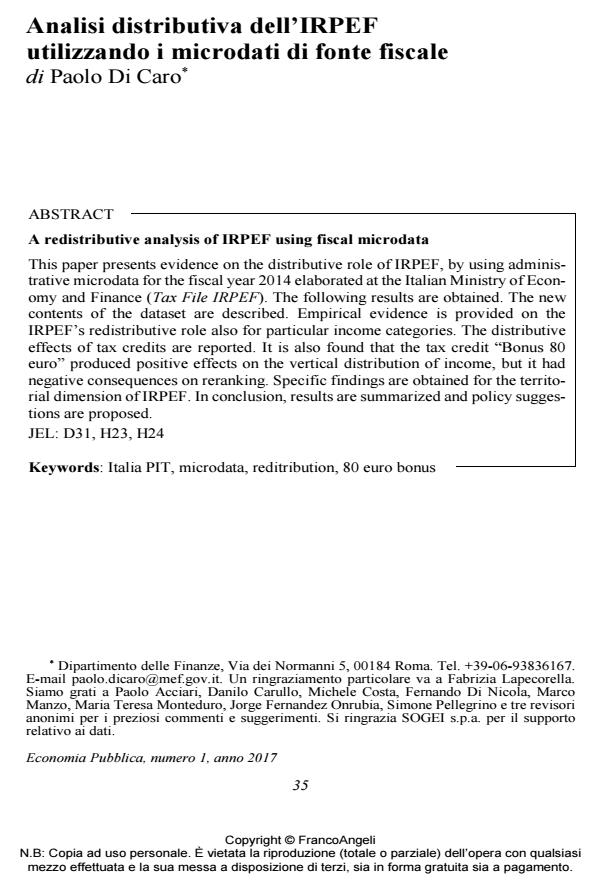A redistributive analysis of IRPEF using fiscal microdata
Journal title ECONOMIA PUBBLICA
Author/s Paolo Di Caro
Publishing Year 2017 Issue 2017/1
Language Italian Pages 25 P. 35-59 File size 307 KB
DOI 10.3280/EP2017-001002
DOI is like a bar code for intellectual property: to have more infomation
click here
Below, you can see the article first page
If you want to buy this article in PDF format, you can do it, following the instructions to buy download credits

FrancoAngeli is member of Publishers International Linking Association, Inc (PILA), a not-for-profit association which run the CrossRef service enabling links to and from online scholarly content.
This paper presents evidence on the distributive role of IRPEF, by using administrative microdata for the fiscal year 2014 elaborated at the Italian Ministry of Economy and Finance (Tax File IRPEF). The following results are obtained. The new contents of the dataset are described. Empirical evidence is provided on the IRPEF’s redistributive role also for particular income categories. The distributive effects of tax credits are reported. It is also found that the tax credit "Bonus 80 euro" produced positive effects on the vertical distribution of income, but it had negative consequences on reranking. Specific findings are obtained for the territorial dimension of IRPEF. In conclusion, results are summarized and policy suggestions are proposed.
Keywords: Italia PIT, microdata, reditribution, 80 euro bonus
Jel codes: JEL: D31, H23, H24
- Do Details Matter? An Analysis of Italian Personal Income Tax Martino Tasso, in SSRN Electronic Journal /2020
DOI: 10.2139/ssrn.3745912 - The contribution of tax-benefit instruments to income redistribution in Italy Stefano Boscolo, in ECONOMIA PUBBLICA 2/2022 pp.181
DOI: 10.3280/EP2022-002001
Paolo Di Caro, Analisi distributiva dell’IRPEF utilizzando i microdati di fonte fiscale in "ECONOMIA PUBBLICA " 1/2017, pp 35-59, DOI: 10.3280/EP2017-001002